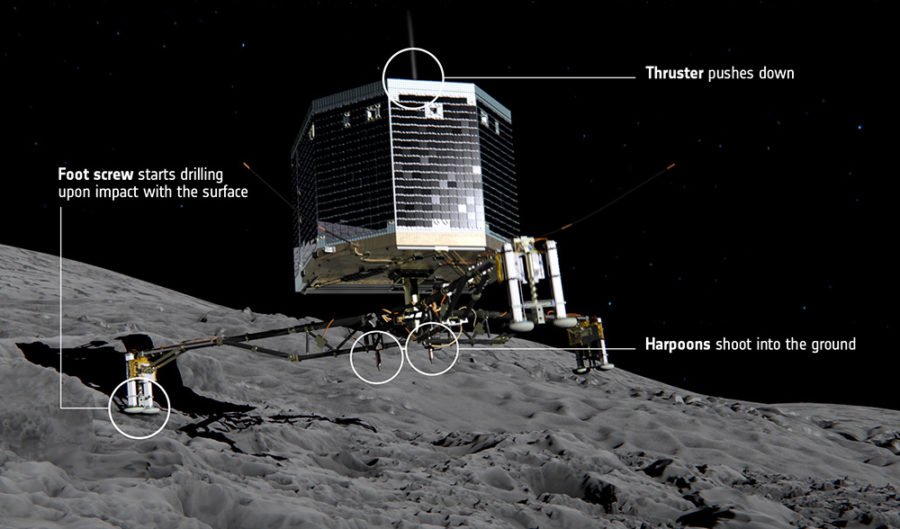All systems go for historic comet landing

THE EUROPEAN SPACE Agency (ESA) has ordered a probe to attempt the first landing on a comet and investigate one of the great mysteries of the Solar System.
“We’ve got the final go” for the operation, an ESA spokeswoman said at mission control in Darmstadt, Germany. “SEPARATION CONFIRMED,” the Rosetta mission added in a tweet at 8:05pm AEST.
Philae, a robot lab bearing 10 instruments, separated from its mother ship Rosetta after a series of final checks.
Half a billion kilometres from Earth, it will descend towards Comet 67P/Churyumov-Gerasimenko, racing towards the Sun at 65,000km/h.
Daring attempt to land a probe on a comet
If all goes well, Philae will touch down about seven hours after it set off (3am AEST) and will then carry out scientific experiments on its surface – a double first.
The audacious mission has been touted as one of the biggest gambles in space history. The 100kg probe will seek out a minuscule landing site on the treacherous surface of an object darker than coal, half a billion kilometres from home.
“It’s not going to be an easy business,” was the understated prediction of Philippe Gaudon of France’s National Centre for Space (CNES) as the mission prepared to enter countdown mode.
The stakes facing Rosetta managers in Darmstadt are daunting as the 1.3 billion euro ($A1.95 billion) project reaches a peak.
Clues to the composition of early Earth
Two decades of work have been poured into what could be a crowning moment in space exploration.
The goal: the first laboratory research into the primeval matter of the Solar System – ancient ice and dust that, some experts believe, may have helped to sow life on Earth itself.
According to this theory, comets pounded the fledgling Earth 4.6 billion years ago, providing it with complex organic carbon molecules and precious water.
Rosetta has already sent home fascinating data on the comet, but Philae will provide the first on-the-ground assessment, using 10 instruments to study the comet’s physical and chemical composition.
Like Rosetta, it will wield a mass spectrometer, a high-tech tool to analyse a sample’s chemical signature, aimed at drawing up a complete carbon inventory.
The showstopper find would be molecules known as left-handed amino acids, the European Space Agency (ESA) said in a statement. “These are the bricks with which all proteins on Earth are built.”
Rosetta and Philae faced long journey
After its launch in 2004, Rosetta spent 10 years zig-zagging around Earth and Mars, using the planets’ gravitational pull as a slingshot to build up speed to reach its prey, Comet 67P/Churyumov-Gerasimenko.
No one knows what a comet’s surface is like. Is it hard and crusty, like a shell? Crumbly? Slippery? Is it brittle – will it crack, causing Philae to sink into some fudgy or spongy substance below?
Seeking to cover all the possibilities, Philae’s designers have equipped the lander with three outstretched legs designed to dampen the impact.
But all may not go as well as planned. The probe has a harpoon to attach to the surface and screws in its feet that will drill into the ice helping it lock down; but a thruster, which was intended to countermand the backwards force from firing the harpoon, isn’t working properly.
ESA scientists can do nothing now but wait now to see if Philae can manage without the thruster.

